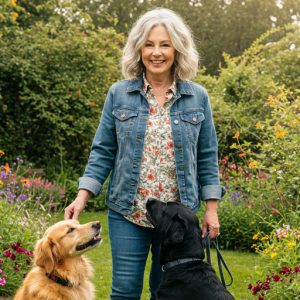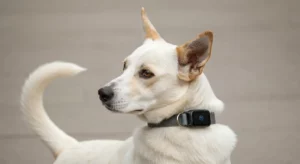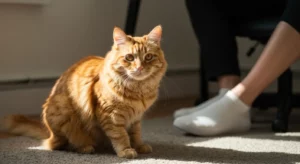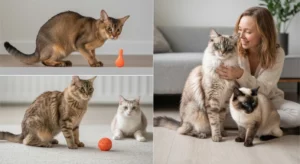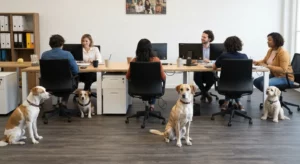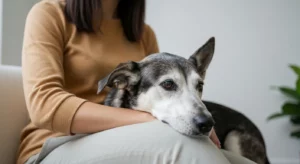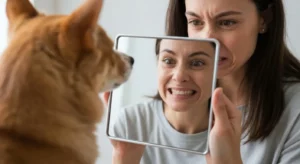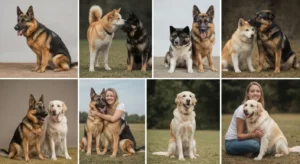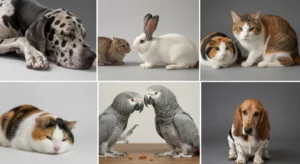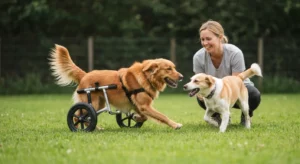Before Finn, my life was measured in miles. Miles hiked, miles run, miles biked through the sprawling forests that bordered my town. My constant companion was Jasper, a grizzled old Border Collie mix whose energy, even in his senior years, was a perfect match for my own restless spirit. Our bond was forged on dusty trails and steep inclines, a silent understanding built over thousands of shared steps. But as Jasper’s muzzle grew whiter and his pace slowed, a quiet space began to open in my life. I decided it was time for a second dog, another adventure buddy to complete our pack.
My search was specific, almost clinical. I scrolled through shelter websites with a clear checklist in mind: young, energetic, sturdy, a dog that could keep up. I was looking for a reflection of the life I already lived, a seamless addition to my carefully curated world of outdoor activity. I clicked past countless faces, each with its own story, but none that felt like mine. And then, I saw him.
The Picture I Couldn’t Unsee
He wasn’t what I was looking for. Not even close. The photo was slightly blurry, taken from an awkward angle in a sterile-looking kennel. He was a lanky golden-brown dog with the softest, most soulful eyes I had ever seen. But it was the description below the photo that stopped my breath.
“Meet Barney. 1-year-old Shepherd mix. Hit by a car and left on the side of the road. Has paralysis in his back legs. Needs a home with someone who understands his special needs. He’s a sweet, loving boy who deserves a chance.”
My first instinct was to click away. Paralysis. The word felt like a wall. This dog couldn’t hike. He couldn’t run alongside me. He was the antithesis of everything on my checklist. It was a tragedy, yes, but it wasn’t my tragedy to take on. I closed the browser tab. But I couldn’t close the tab in my mind. His eyes, full of a gentle hope that defied his circumstances, were imprinted on my memory.
For two days, I tried to forget him. I looked at other dogs, healthy and boisterous dogs who would be perfect for my lifestyle. But every face morphed into his. Every happy bark I imagined sounded hollow compared to the quiet dignity in that single photo. My practical, logical brain was at war with a part of my heart I didn’t know existed. Finally, I surrendered. “I’ll just go meet him,” I told myself. “Just to see.”
A Leap of Faith and a World of Doubt
The shelter smelled of bleach and a faint, underlying note of animal anxiety. A volunteer led me to a quiet wing, away from the cacophony of the main kennels. There he was. He was lying on a thick blanket, and when he saw me, he didn’t bark. He just lifted his head, his tail giving a few enthusiastic thumps against the concrete floor. He pulled himself forward with his front paws, his useless back legs trailing behind him. There was no self-pity, no hint of bitterness. There was only a pure, unfiltered desire to connect.
I sat on the floor with him for nearly an hour. He army-crawled into my lap, rested his heavy head on my knee, and sighed a deep, contented sigh. In that moment, my checklist, my plans, my vision of a “perfect” dog dissolved. This was my dog. I renamed him Finnegan—Finn for short—a name that felt strong and full of life. The adoption paperwork was extensive, full of waivers and warnings about the immense challenges ahead. The special needs pet experience I was signing up for was not for the faint of heart. The shelter director looked at me with a mixture of hope and concern. “Are you sure?” she asked gently. “This is forever.”
“I’m sure,” I said, my voice more confident than I felt.
The first month was brutal. The reality of caring for a paralyzed dog was a constant, exhausting teacher. There was a steep learning curve involving things I’d never imagined: expressing his bladder every four to six hours to prevent infections, managing a canine diapering system, and a meticulous skincare routine to prevent pressure sores on his hips. My house, once a simple haven, became a landscape of ramps, orthopedic beds, and strategically placed waterproof pads. My hiking boots gathered dust by the door.
There were nights I sat on the kitchen floor and cried, overwhelmed by the sheer, relentless nature of his care. I felt a profound sense of isolation. Friends with “normal” dogs couldn’t understand. Strangers on our slow, halting walks would offer looks of pity that felt like tiny paper cuts to my already frayed nerves. I saw the confusion in Jasper’s eyes, who couldn’t figure out why his new brother couldn’t chase him in the yard. In my darkest moments, I wondered if I had ruined all of our lives—mine, Jasper’s, and Finn’s—by taking on more than I could handle.
Two Wheels and a New Beginning
The turning point didn’t arrive in a single flash of insight. It came in a large cardboard box. After weeks of research and saving, I had ordered a custom wheelchair for Finn.
Getting him into the contraption of straps and aluminum bars was an awkward, clumsy dance. He was terrified, associating the feeling of being lifted and manipulated with vet visits and painful procedures. He stood frozen, his body rigid with fear. My heart sank. I had pinned so much hope on this device, imagining it would be an instant fix. For a week, we practiced just standing in it for a few minutes at a time, armed with a mountain of his favorite treats.
Then one afternoon, in the backyard, something clicked. Jasper, in a bid to entice his brother, dropped a tennis ball a few feet in front of Finn. On pure instinct, Finn lunged forward with his front paws. The wheels rolled beneath him. He stopped, surprised. He took another step, then another. The wheels followed, an extension of his own will. A look of sheer astonishment washed over his face.
He took a few more tentative steps, and then he was off. He wasn’t just walking; he was running. He tore across the grass, his ears flying back, his tongue lolling out in a goofy grin. He was a blur of gold and silver, a chariot of pure joy. Jasper, ecstatic, ran alongside him, barking with excitement. I stood by the back door, tears streaming down my face. It wasn’t pity or exhaustion. It was overwhelming, gut-wrenching joy. We hadn’t fixed what was broken. We had simply given him the tools to be whole.
Redefining Our Adventure
That wheelchair didn’t just give Finn mobility; it gave us our life back, albeit a different one than I had planned. The rugged mountain trails were replaced with paved greenways and smooth woodland paths. I learned to see the world through a different lens, noticing the subtle beauty of a flat, accessible lakeside trail instead of only craving the panoramic view from a summit.
Our adventures became more creative. We discovered a love for swimming, where the water rendered his legs weightless and he could paddle with all four, his body free and unencumbered. We spent hours in the yard playing scent games, hiding treats for him to find, proving that a strong nose and a clever mind were just as powerful as strong legs. The special needs pet experience I had dreaded became a journey of innovation and discovery.
He taught me about a different kind of strength. His resilience was breathtaking. He never mourned the legs that didn’t work. He simply embraced the tools that did. He navigated the world with a cheerful determination that put my own anxieties to shame. He and Jasper developed their own unique way of playing—a gentle game of tug-of-war where Jasper knew to stay put, letting Finn use his powerful front-body strength. They were a pack, perfectly balanced and deeply connected.
The Unspoken Lessons of a Resilient Heart
Years have passed. Finn’s muzzle is now dusted with gray, matching Jasper’s. His wheelchair has a few dings and scratches, each one a memento of a happy day. My life is still measured in miles, but they are different miles now—slower, more deliberate, and infinitely more meaningful.
Adopting a special needs pet was the hardest thing I have ever done. It challenged my patience, my finances, and my emotional fortitude. But it also cracked my heart wide open and filled it with a kind of love I never knew was possible. Finn taught me that a life isn’t defined by its limitations, but by its capacity for joy. He taught me that adaptation is a form of strength, and that the most profound connections are often forged not in shared perfection, but in navigating imperfections together.
I set out to find a dog who could fit into my world. Instead, I found a dog who completely rebuilt it. He wasn’t the dog I thought I wanted, but he was, without a single doubt, the dog my soul needed. Every evening, when he rests his head on my lap, his soft brown eyes looking up at me with unwavering trust, I know that I didn’t rescue him. In every way that truly matters, he rescued me.


